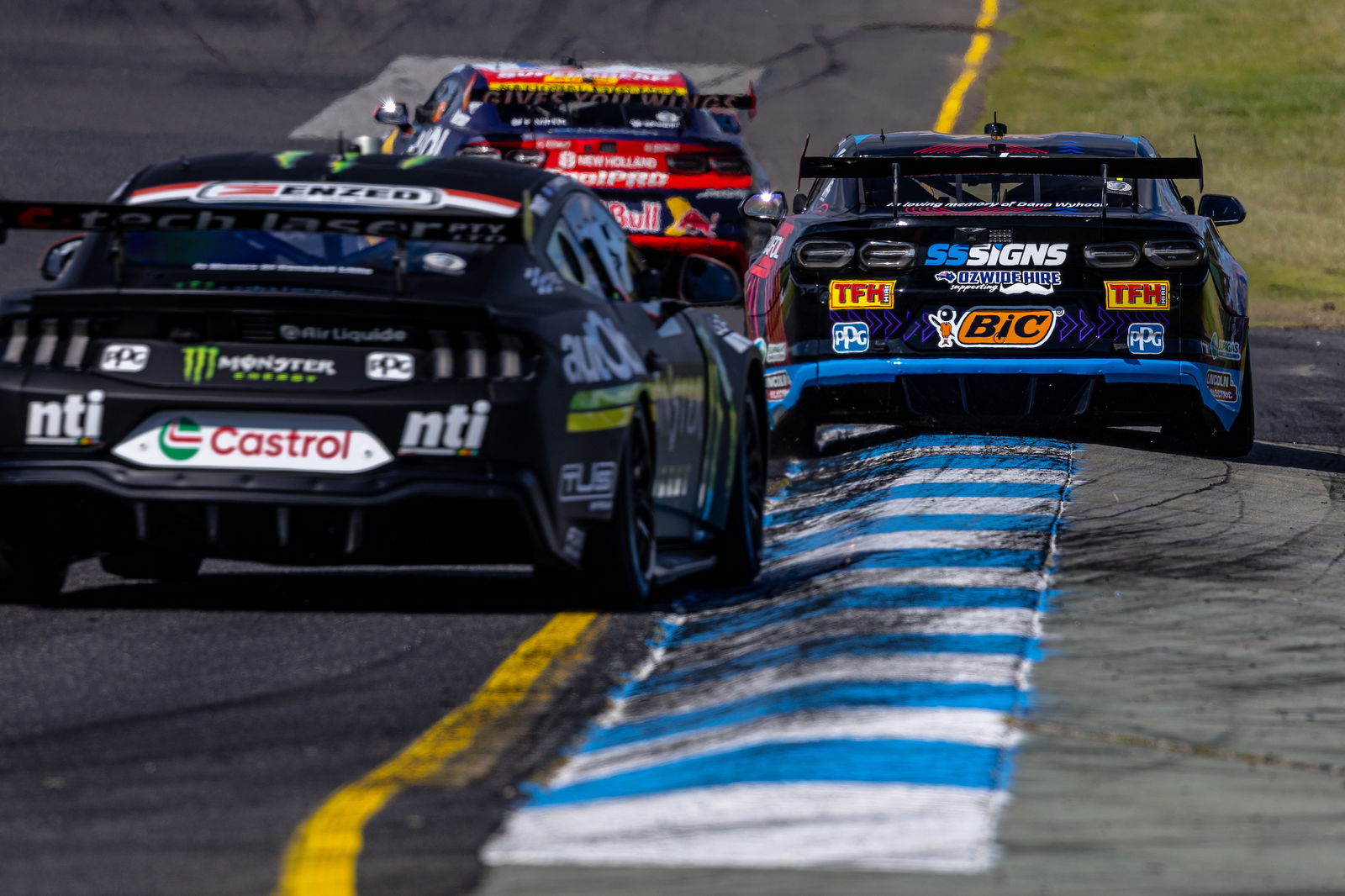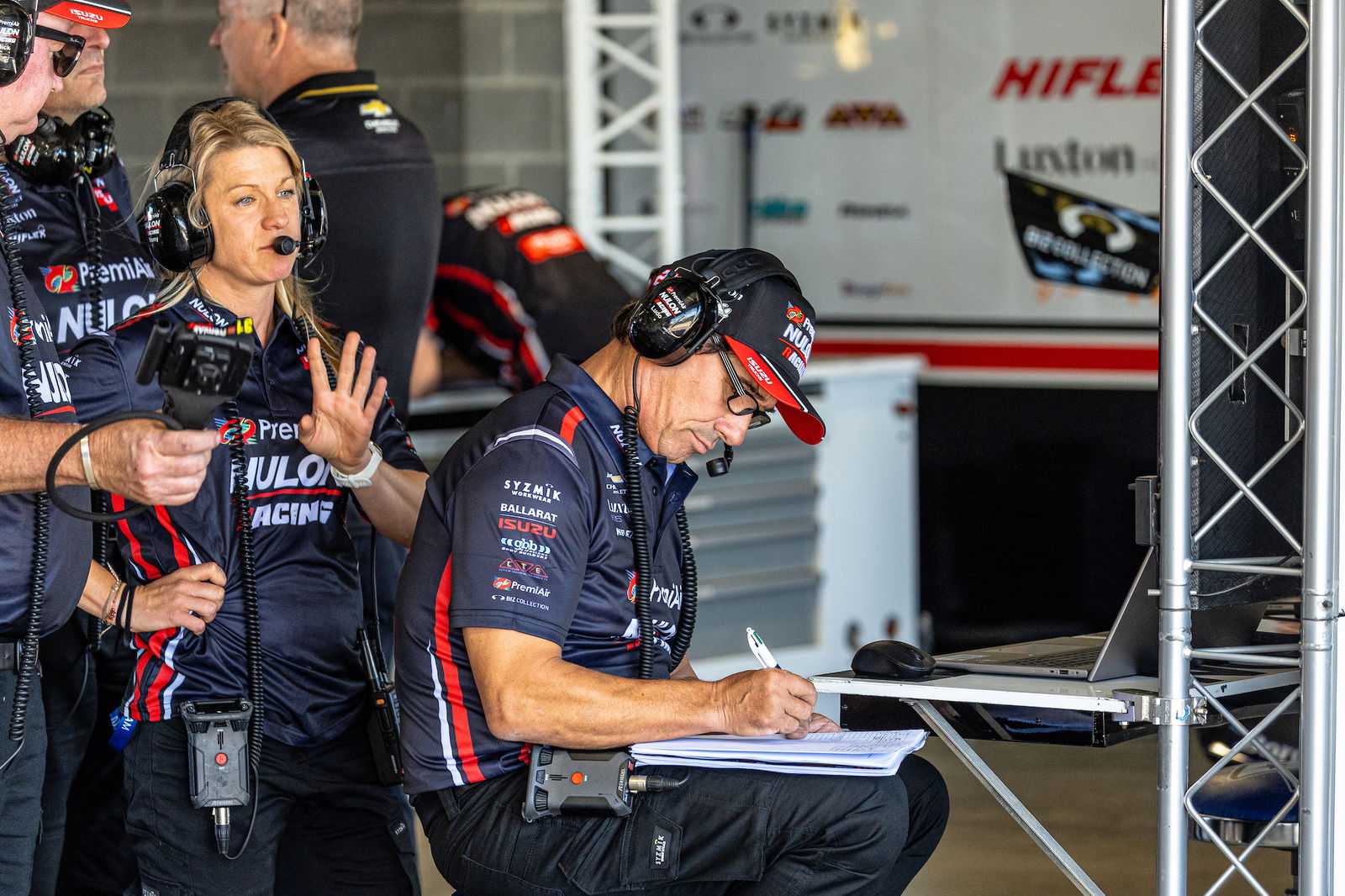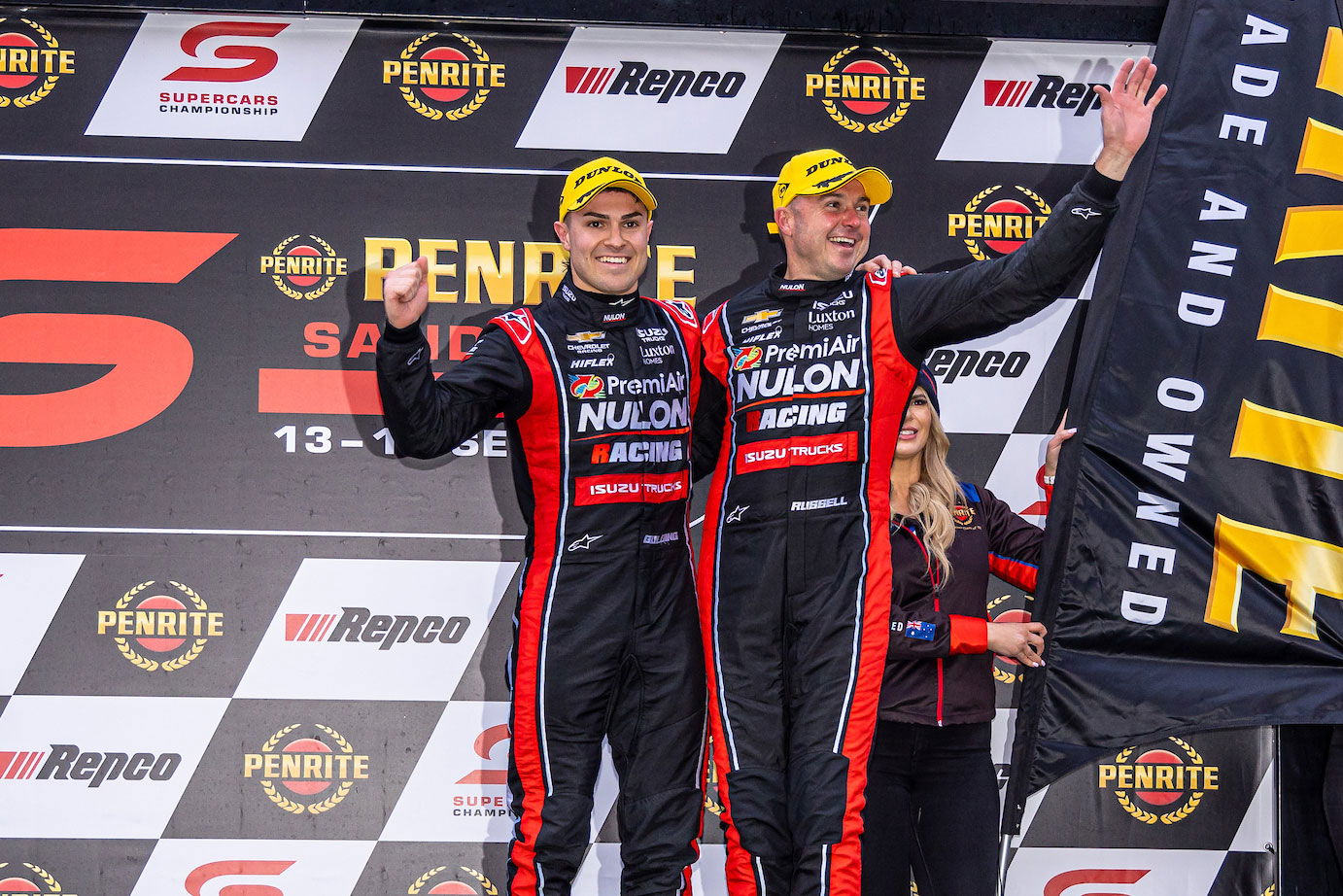

It’s an age-old question that PremiAir Racing competition director Ludo Lacroix weighed in on in the wake of the team’s Sandown 500 podium breakthrough.
Lacroix is well-versed in what’s required to climb the Supercars summit, having played a major part in building Triple Eight and DJR Team Penske into powerhouses.
He’s now attempting to do the same at PremiAir Racing, although in a very different era of Supercars regulations.
“All of the teams have got now the same tools,” said Lacroix in a team Q&A video answering the question – how much of the placing do you think comes down to the driver?
“The same car, chassis-wise, the same aero, even though it looks different – one is a Mustang, one is a Chev Camaro, but they have been tested, they are very similar – and the two engines are very, very similar.
“The similarity means that, what’s left? Well, the cars are the same, so it’s the driver and the engineering group, and the team itself in terms of execution, pitstop execution, strategy execution.
“But in terms of performance, you’ve got the same car, the same tools, (so the difference is) the driver and the engineering group.
“When you look at it, 50 percent of the result is probably down to the driver.”
Lacroix breaks down the hallmarks of a top driver into three elements: raw speed, their feel for the machinery and the ability to adapt their driving style.

“Obviously we are not all equal, it’s the nature of life. Some drivers are faster than others,” Lacroix continued.
“The second element in the driver difference is… some drivers find what is going to make the car faster where others don’t find that.
“Basically you’re trying blind to find solutions where others have got a feel, more feel.
“It’s not only the talent of driving the car, it’s the talent of knowing track-by-track, and it depends on every track, what is going to make the car fast.
“The third element is probably how much a driver matches a track. Some drivers are fast and flowy, some are V-shape style, more braking, rotate, acceleration. They have to adapt themselves track-by-track.
“That’s what makes one driver which has got the talent for one or the other track but understands he’s got to change his technique and that, this is the technique for that corner and this is the technique for that corner…
“That’s why the driver becomes so important, in my opinion. Unfortunately, there’s not 25 top drivers, it’s the nature of life again and some of the good ones have gone to the outside of Australia.”
The last point is a not-so subtle reference to the fact that Scott McLaughlin, who Lacroix engineered to three titles at DJR Team Penske, and Shane van Gisbergen have departed to ply their trade in the United States.
That’s left the Supercars driver talent pool a little more open, with new front-runners Will Brown, Broc Feeney, Chaz Mostert, Cam Waters and Matt Payne fighting for supremacy in the championship’s top-five.
Notably, PremiAir’s own James Golding is now sixth in the standings following the long-awaited maiden Supercars podium finish for both team and driver at the Sandown 500.

Although not naming names, Lacroix hints Golding has the potential to join the top group.
PremiAir missed out on key target Brodie Kostecki for its other entry next season, but has opted to part ways with incumbent Tim Slade in a move announced by the driver on Thursday.
“It’s definitely 50 percent for me which is driver related,” concluded Lacroix, who was speaking prior to the Slade news.
“[That] is why we are all chasing a group of five, seven or eight drivers in the championship, which seems to us to have that talent, that quality of lap time, thinking, putting everything together, it’s quite tricky.
“By the same token, you can develop that. Some of the drivers at PremiAir have got the potential to be top drivers and that’s what we’re trying to give them the tools and exploit their capability and try to make them better in this direction.
“But yes, the driver is a very important element these days. We can’t design a better car, we cannot design anything. We can only use the tools.”



















Discussion about this post